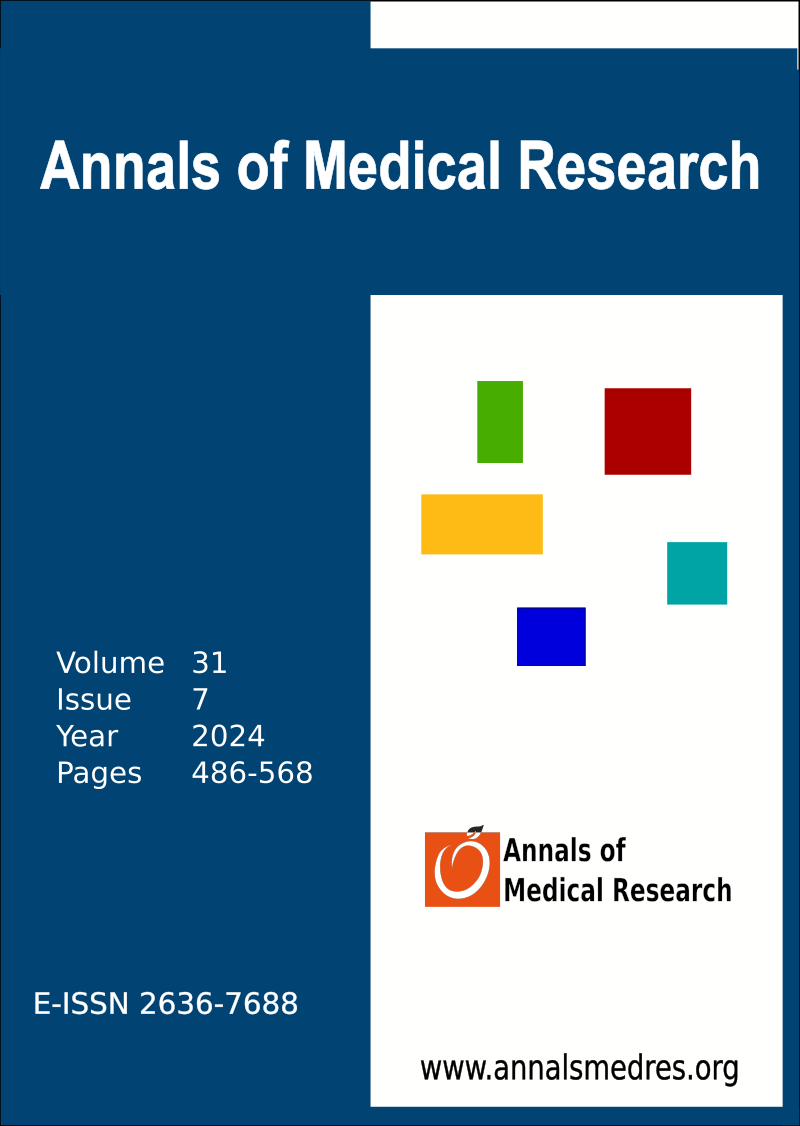Clinical results of surgical neurectomy of Morton’s neuroma
Keywords:
Forefoot, Morton, NeurectomyAbstract
Aim: Morton's neuroma (MN), specifically with its forefoot placement, sometimes significantly impacting patients' quality of life. The aim of this study is to present the outcomes of neurectomy surgeries performed for MN disease. Investigating the impact of this surgery, which has a complication such as hypoesthesia, on postoperative patient satisfaction, is the targeted objective.
Materials and Methods: Seventeen masses of 16 patients were studied. In patients diagnosed with MN mass through physical examination and imaging techniques, a 3 cm incision was made to excise the nerve mass either dorsally or plantar under spinal anesthesia. During routine outpatient follow-ups, the American Orthopedic Foot and Ankle Society (AOFAS) score, Visual Analog Scale (VAS) score, and Coughlin’s criteria were assessed both preoperatively and postoperatively. The effects of conservative treatments such as preoperative orthoses and steroid injections on pain scores were recorded and evaluated. Recurrence of mass development and wound issues were investigated to evaluate the outcomes.
Results: The mean age at the time of surgery was 46.75 years (26-58 years). The mean follow-up period was 23.12 (6-75 weeks) weeks. After surgery, excellent results were achieved in 9 patients (64.3%), and good results were obtained in 4 patients (28.6%). Recurrent mass development occurred in two patients (12.5%). Two patients (12.5%) were operated on with a plantar approach, and one patient with recurrent massbelonged to this group. Hypoesthesia was described in 15 out of 16 patients. There were significant improvements between patients' preoperative VAS and AOFAS scores and postoperative VAS and AOFAS scores, which were statistically significant (p <0.001).
Conclusion: Numerous studies have been conducted on the diagnosis and treatment of MN disease, yet a common procedure has not been developed. Among existing treatments, excision of the mass with some healthy nerve tissue and a dorsal approach to the foot are commonly employed methods. Dorsal neurectomy surgeries demonstrate a success rate exceeding 80%. Informing patients about the possibility hypoesthesia before surgery and establishing realistic expectations can make this procedure safely applicable.
Downloads
Published
Issue
Section
License
Copyright (c) 2024 The author(s)

This work is licensed under a Creative Commons Attribution-NonCommercial-NoDerivatives 4.0 International License.
CC Attribution-NonCommercial-NoDerivatives 4.0






